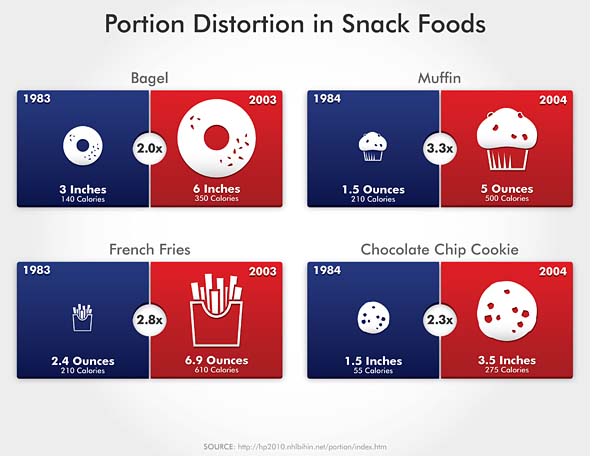The Obesity Era
- By Pia Hinckle
- Reading Time: 4 mins.
 The Weight of the Nation is a Must See
The Weight of the Nation is a Must See
By Pia Hinckle
America today (circa 2012): one-third of our adult population is obese; another third is overweight. That’s 75 percent of our more than 311 million citizens. Already about 17 percent of our children and teens are obese. If our waistlines keep growing, the Centers for Disease Control (CDC) estimates that by 2030, up to 50 percent of our population will be obese. Will we become a nation of super-sized, motorized denizens like in the future world depicted in Wall-E? Is this really the Obesity Era?
The Weight of the Nation, HBO’s four-part series made in conjunction with the CDC, the National Institutes of Health, the Dell Foundation, and Kaiser Permanente, tries to scare us straight—or rather skinny, or at least to normal range body mass index—by showing us the stories of real obese people (and kids) and their health problems (diabetes, heart disease, kidney and liver disease, stroke, high blood pressure, myriad cancers and disabilities) while ticking off the biological and societal circumstances that researchers and doctors believe got us here in just 40 years: an explosion in daily calorie consumption coupled with a decrease in daily physical activity, the subsidized cheapness and overabundance of processed foods, a culture of constant snacking and huge portion sizes, and prevalent (and even predatory) food and sweetened beverage advertising to kids.
Want farm-fresh fruit?
We've got you covered.You do not need HBO to watch the series. You can watch it for free on The Weight of the Nation website, as well as on YouTube. The series has four parts, each about an hour: Part 1: “Consequences” looks at the scope of the obesity epidemic (which is what the CDC has defined it as); Part 2: “Choices” looks at the biomechanics behind obesity and what can be done to reverse it; Part 3: “Children in Crisis” shows a generation at risk; Part 4: “Challenges” looks at what is driving the epidemic and gives examples of what individuals and communities are doing to change.
If I were going to watch just one of these, I would recommend Part 3: “Children in Crisis.” Children and teens growing up today are literally at risk of dying at a younger age than their parents, and even their grandparents. Human biomechanics means we literally can become addicted to high-fat, sweet foods. When this begins in early childhood, the odds are stacked against children to maintain a healthy weight as they grow. You will also never look at child-targeted food advertising the same. Sugary cereals, foods, and sugar-sweetened drinks have the potential to create addicts as surely as tobacco does. The fact that school funding cuts have all but eliminated PE as a daily event at most schools has gravely contributed to the problem. Kids are expected to sit for long periods of time, have short recesses, and have unhealthy food options in most school cafeterias. Urban kids may live in neighborhoods with no parks or playgrounds, and those who live in high crime areas have literally no safe place to play outside.
 While the series discusses lost U.S. productivity and lost wages due to obesity and correlating illnesses and the health care costs of treating the symptoms of obesity, it does not touch on weight bias, a prevalent practice still widely accepted despite the growing numbers of obese people.
While the series discusses lost U.S. productivity and lost wages due to obesity and correlating illnesses and the health care costs of treating the symptoms of obesity, it does not touch on weight bias, a prevalent practice still widely accepted despite the growing numbers of obese people.
Want fruit for your office?
Get your office a free sample TODAY!
“Obesity carries one of the last forms of socially accepted discrimination,” said Charlotte Dickson, leader of the Healthy Eating Active Living Cities Campaign for the California Center for Public Health Advocacy, at the Childhood Obesity Bay Area conference in San Francisco on May 19.
The Weight of the Nation website has a fantastic resources page that can give you everything from a child BMI calculator, so you can tell if you’re overweight or obese, to how to improve your nutrition and eating habits and increase your physical activity.
 What can you do?
What can you do?
1. Watch the Series
Think about it. Be aware of your and your family’s unnecessary calories. Slow down when you eat.
2. Move More
CDC tells you how much physical activity is recommended to maintain a healthy weight. Just 10 minutes of brisk walking three times a day will do it.
3. Reduce Portions
Drop drink size from large to medium; reduce what’s on your plate by half; don’t take seconds.
4. Rethink Your Drink
Hundreds and even thousands of calories a day come from what you drink. Be aware; read labels. Switch out high-calorie drinks for water or unsweetened tea. See Kick the Can and Rethink Your Drink. Take our Rethink Your Drink Challenge this summer.


